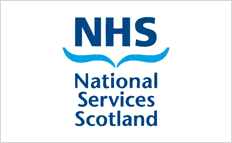Aluminium (Al)
Aluminium is a non-essential trace element which is found widely in food and substances such as toothpaste and cosmetics. Only a very small percentage of ingested aluminium is absorbed although organic forms (such as aluminium citrate and aluminium-containing drugs) are more readily absorbed. Absorbed aluminium is transported in the blood bound to transferrin and can accumulate in bones. It is readily excreted by the kidneys.
Aluminium is excreted in urine and so can accumulate in patients with renal disease. Aluminium in tap water can cause a toxic syndrome in uraemic patients when this tap water is used during dialysis. In the early days of renal dialysis, microcytic anaemia and an encephalopathy (called dialysis dementia) was found in some patients while hypercalcaemic osteomalacia occurred in children on haemodialysis. When this was discovered to be due to aluminium poisoning (because aluminium hydroxide is added to water supplies), water used for haemodialysis was purified by reverse osmosis (RO).1 Regular checks are now performed to ensure that aluminium concentrations in RO water are less than 10 µg/L.
The use of aluminium-based phosphate binders to treat hyperphosphataemia can also cause bone disease in some renal patients who may be hyperabsorbers of oral aluminium. Aluminium-based phosphate binders have largely been replaced with a new class of drugs such as Sevelamer.
Renal Association guidelines recommend the measurement of aluminium in patients taking aluminium hydroxide or other aluminium-containing medicines. Plasma aluminium does not require measurement in dialysis patients if RO concentrations are within limits and the patient is not prescribed aluminium-containing medicine.
Because of the risk of contamination of samples with aluminium, our Laboratory policy is to reanalyse all high results (> 1.5 µmol/L) from the primary sample.
Sample Requirements and Reference Ranges
| Sample Type | Plasma, water (see this page for further details on dialysis water analysis) |
|---|---|
| Container |
Plasma: whole blood in lithium heparin (non-gel), or ‘Trace Metal’ tube. Water: universal container. |
| Precautions |
Plasma: Send by first class post to arrive within 72 hours of collection. If delivery to Glasgow will be outwith 72 hours, separate sample and store plasma frozen until sending and then send by first class post. Samples are highly prone to contamination from dust etc. The lithium heparin tube should be all-plastic, free of rubber rings or other sealing materials in the cap. Those produced by Greiner, Sarstedt and Vacutainer are suitable. Lithium heparin gel tubes are unsuitable. If samples are being separated locally please ensure the tubes for plasma and Pasteur pipettes have not been exposed to dust. Powder inside plastic gloves can be a significant source of aluminium contamination when handling samples. Water: Universal containers for collection of water should be all plastic and free of sealing materials in the cap. 30mL polypropylene Sarstedt (code 63.9922.252) are suitable. |
| Minimum volume |
Plasma: minimum 250 µL* Water: minimum 1 mL |
| Reference ranges |
Plasma: < 0.4 μmol/L2 (#SAS Trace Element Handbook, 2006)
Dialysis water: < 10 μg/L (recommended limit for reverse osmosis water)3 |
| Mean Turnaround time | Plasma: 4.5 days (see this page for STEMDRL TAT targets) |
| Method | Inductively coupled plasma mass spectrometry |
| Traceability |
Plasma: Traceable to reference material produced in accordance with EN ISO 17511:2003 “In vitro diagnostic medical devices. Measurement of quantities in biological samples. Metrological traceability of values assigned to calibrators and control materials” and reference materials with values determined by reference laboratories.
|
| Intermediate Precision (CV) | See this page for latest data |
| Measurement Uncertainty (U) | See this page for latest data |
| Analytical Goals (CV) | See this page for latest data |
| EQA Scheme | Plasma and water: UK NEQAS, Guildford (once per month) |
| Included in UKAS scope? |
Plasma: Yes Water: No |
* Absolute minimum volume; this volume is insufficient to carry out repeat analysis if analysis fails.

